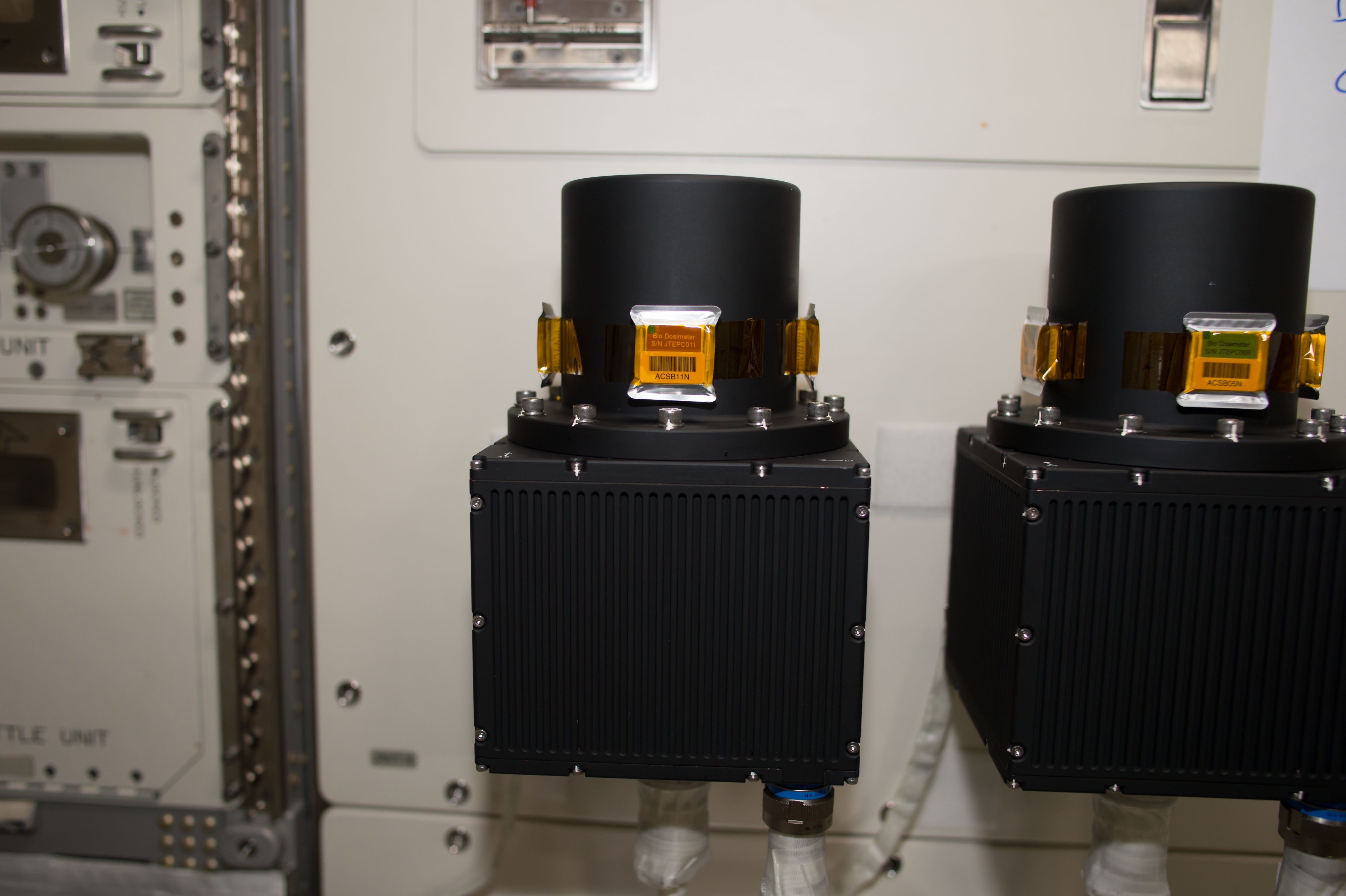- completed
[PS-TEPC]
The establishment of dosimetric system in the International Space Station (ISS) using Position Sensitive Tissue Equivalent Proportional Chamber
- Physical Science
ISS Science for Everyone
SCIENCE OBJECTIVES FOR EVERYONE
The Position Sensitive Tissue Equivalent Proportional Chamber (PS-TEPC) is a radiation measuring instrument that measures absorbed doses and path length of space radiation particles simultaneously, and determines the real time Liner Energy Transfer (LET), and equivalent doses, to assess radiation risk to crew members during space flight. Dose management for space radiation exposure is extremely important for crew members, because the dose rates resulting from radiation sources (galactic cosmic rays, solar particle events, and protons trapped in Earth’s radiation belts) and secondary particles (such as neutrons) in Low Earth Orbit (LEO) are a few hundred times greater than those on the ground. The detector of PS-TEPC is a time projection chamber (TPC) made of biological tissue-equivalent materials where a micro-pixel chamber (m-PIC) is used as a 2-dimensional position sensor, which can acquires 3-dimensional tracks and the energy of each particle, as well as its energy, that contributes to dose distributions occurring in the human body.
Experiment Description
RESEARCH OVERVIEW
- Existing active dosimeters, which have been developed for real time radiation monitoring, have defects in terms of accuracy which is caused by systematic error. Since cosmic rays have a various LET (Linear Energy Transfer), it is essential to directly measure its LET (namely deposit energy and track length of radiation simultaneously) to evaluate radiation dose on human body. The ideal real –time dosimeter needs capabilities to measure deposited energy in a certain volume and its path length in it. But the dosimeters so far used are unable to obtain position information and path lengths interpolated, or estimated on the ground, are normally used. It is rather difficult to acquire path length information in real-time in space. PS-TEPC has been developed as a dosimeter having fine position sensitivity, as well as the capability of energy measurement, and is made of human tissue-equivalent materials.
- This experiment aims to validate the effectiveness of PS-TEPC under space radiation environment and improved accuracy as a real-time radiation monitoring device.
- Real-time radiation data (energy, LET, dose etc.) could be able to be provided more accurately as a result.
DESCRIPTION
PS-TEPC is constructed as a gas-filled time projection chamber (TPC) with a micro pixel chamber (μ-PIC) electrode. The μ-PIC is made from a series of pixel-like electrodes on a double-sided printed circuit board (PCB).
Its effective volume is surrounded by the drift plane, drift cage, and μ-PIC electrode. The drift plane and shaping frames that produce a homogeneous electric field are made of A-150 tissue-equivalent conductive plastic plates.
The anode and cathode electrode strips are arranged perpendicular to each other and their pitch is 400 μm. The z coordinate is obtained from the drift velocity of ionized electrons and drift time, which are determined using the triggering time of the plastic scintillator just behind the beam windows and the arrival time of the drift electrons at the μ-PIC electrode in the heavy ion irradiation experiment.
To evaluate the radiation dose in space, Linear Energy Transfer (LET) measurement is essential. The detector was filled with an atmospheric tissue-equivalent (TE) gas, which realize to evaluate radiation effects for human body. This methodology realizes real-time measurements of deposited energy and track of radiation in the effective volume in order to determine LET for tissue- equivalent object in space.
Media Gallery



Applications
SPACE APPLICATIONS
PS-TEPC can be used for radiation dose management onboard the ISS and future manned space missions, since it can precisely measure the doses due to various charged particles covered under a wide range of the LET energy spectrum.
EARTH APPLICATIONS
PS-TEPC methodology can be applied to environmental monitoring, and dose management of radiation workers, and researchers working at high-energy accelerator facilities and nuclear facilities.
Operations
OPERATIONAL REQUIREMENTS AND PROTOCOLS
This experiment require simultaneous measuring with PADLES dosimeters and should start by 4 days after arriving onboard due to PADLES dosimeter constraints that the measurement period should be more than 90% of the total exposed duration. Also this experiment should start as soon as possible, because gas contained in the detector may cause degradation of the purity which affects the result of the experiment.
Crew unstows J-TEPC from CTB, and sets up in JEM. Measurement is operated by ground. After finishing the measurement, crew removes and stows J-TEPC. Dosimeter attached on the detector unit removal tasks during operation period. Stows PADLES dosimeters into return bag.
Publications
PRINCIPAL INVESTIGATOR(S)
SASAKI Shinichi [High Energy Accelerator Research Organization (KEK)]
Unless specified otherwise, rights to all images belong to ©JAXA



